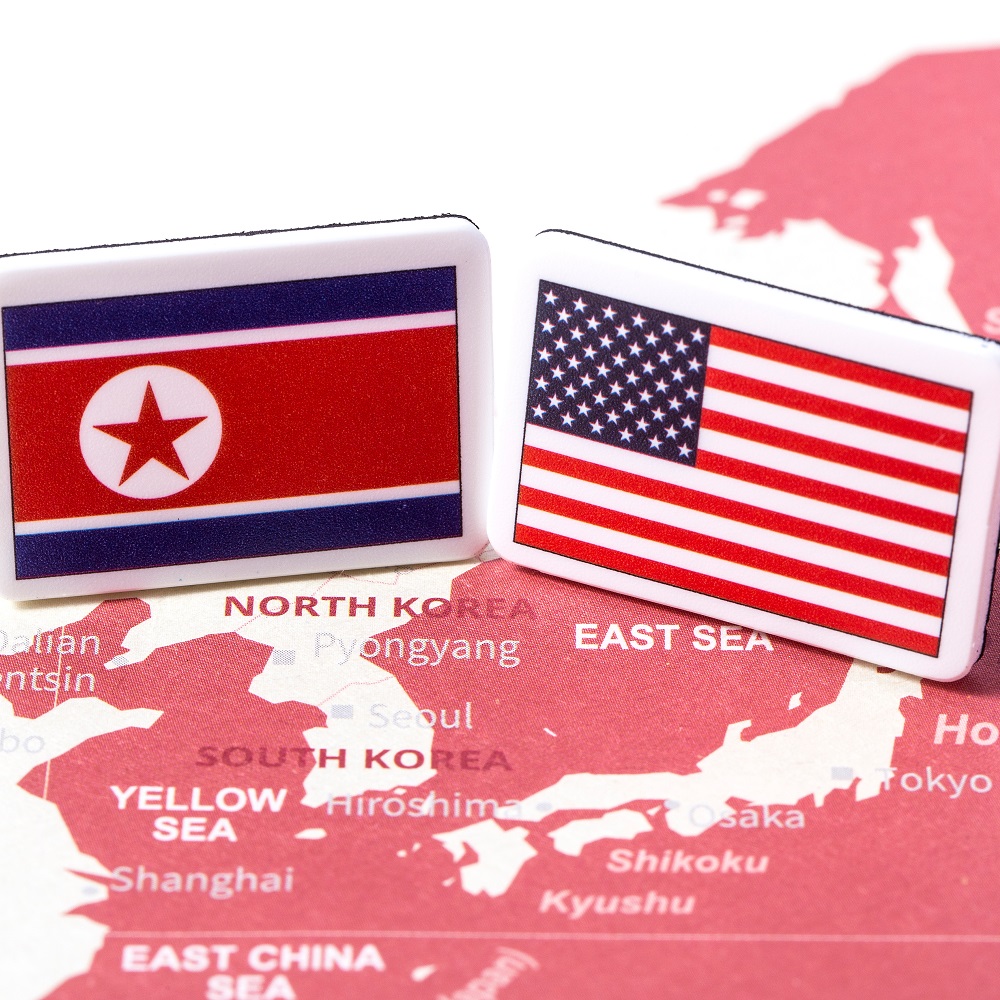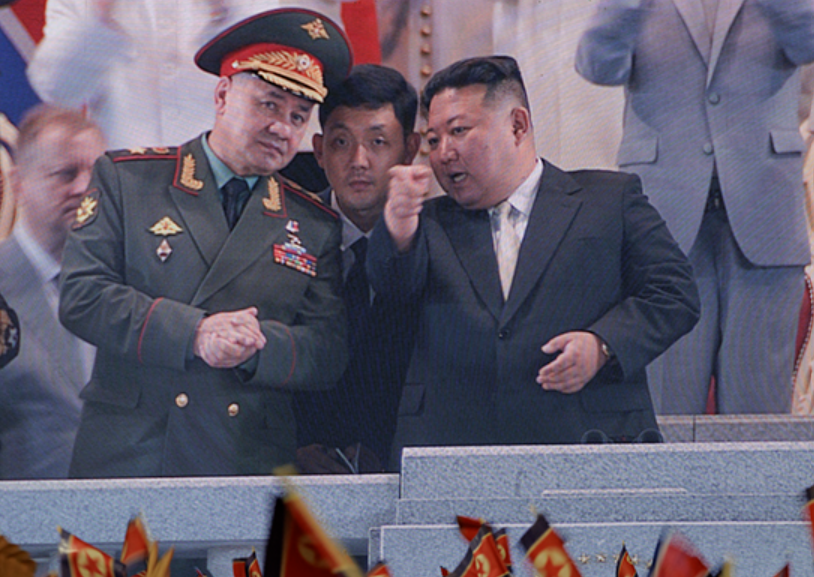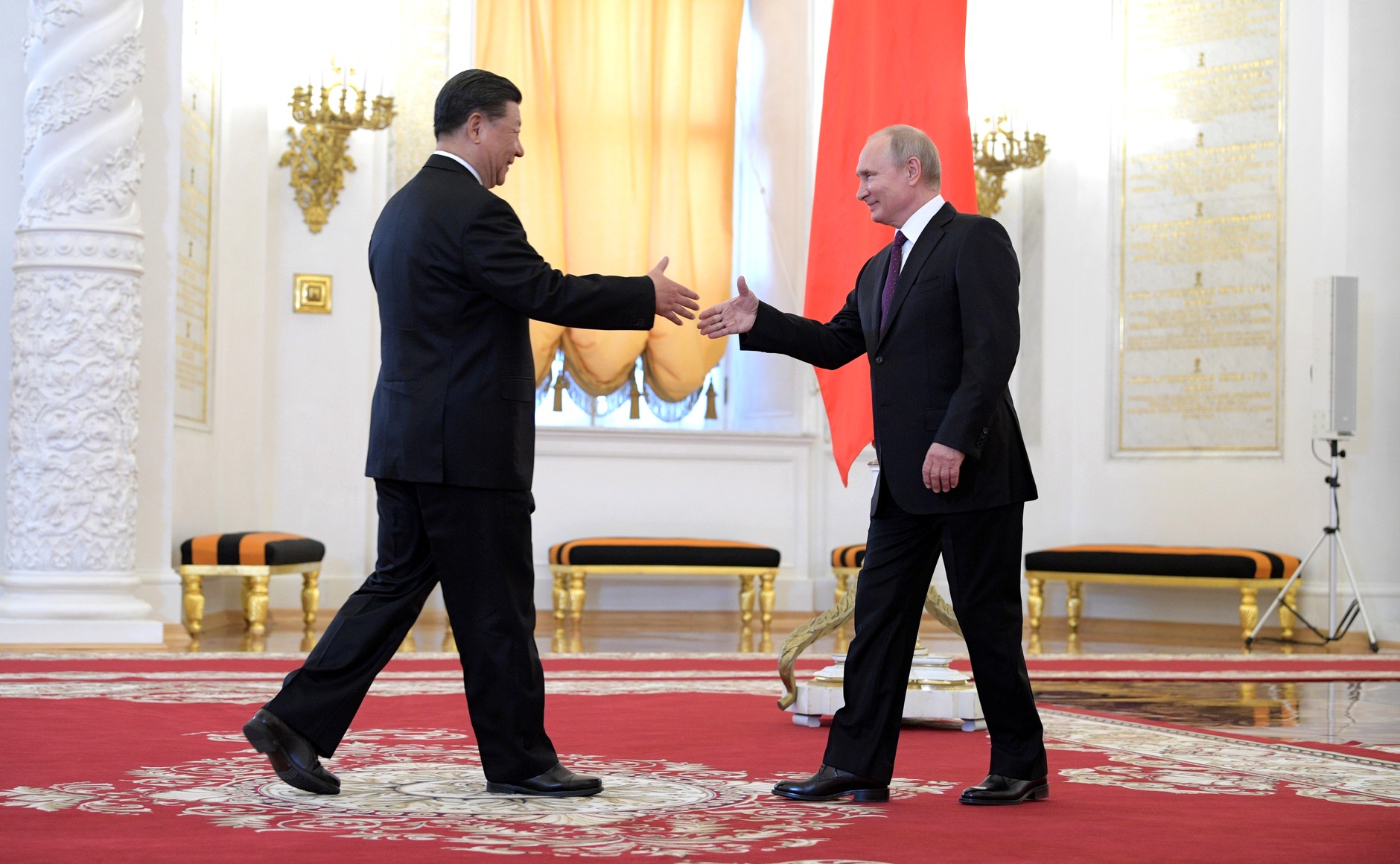
Collapse of the Security Council Panel of Experts and the United States' persecutory obsession with the Democratic People's Republic of Korea
by Jesús Aise Sotolongo
한국어로 읽기 Leer en español In Deutsch lesen Gap اقرأ بالعربية Lire en français Читать на русском Regarding Linda Thomas-Greenfield's visit to the Republic of Korea. At the end of last March (March 28th), due to Russia's veto and China's abstention in the UN Security Council, it did not extend the mandate of the Panel of Experts of the Sanctions Committee overseeing the implementation of punitive measures against the Democratic People's Republic of Korea (DPRK). This joint action by two of the global powers in the multilateral body has destabilized Washington, which angrily seeks an alternative that allows it to maintain its persecutory actions. Panel of Experts It is pertinent to detail that 18 years ago, under Resolution 1718 (2006), the Security Council established the Experts Group or Panel of Experts of the Sanctions Committee to oversee penalties imposed on the DPRK, which is comprised of eight specialists. In compliance with Resolutions 1718 (2006), 1874 (2009), 2087 (2013), 2094 (2013), 2270 (2016), 2321 (2016), 2356 (2017), 2371 (2017), 2375 (2017), and 2397 (2017), the Experts Group has, among other functions: 1. Assist the Sanctions Committee in executing its mandate, as outlined in paragraph 12 of Resolution 1718 (2006) and paragraph 25 of Resolution 1874 (2009); ● Gather, examine, and analyze information provided by Member States, relevant United Nations bodies, and other stakeholders regarding the implementation of measures, particularly focusing on instances of non-compliance; ● Formulate recommendations on actions that the Council, the Committee, or Member States could consider in order to enhance the implementation of measures; ● Submit a midterm report to the Committee and, following deliberations with it, present such report to the Security Council; ● Assist Member States in preparing and submitting national reports on the implementation of specific measures they have adopted to effectively implement the provisions of relevant resolutions; ● Support the Committee's efforts in further developing, improving, and drafting guidance notes for the implementation of resolutions. The members of the Panel of Experts are appointed by the General Secretary of the United Nations, upon the proposal of the referred Sanctions Committee. Members of the Panel of Experts have specialized expertise in areas such as nuclear issues, control of weapons of mass destruction and conventional arms, customs and export controls, non-proliferation policy, trade, finance and economics, air and maritime transportation, and missile and related technologies. The Security Council has urged all States to fully cooperate with the Panel of Experts, particularly by providing any information they possess regarding the implementation of measures. States are encouraged to respond to all requests promptly and comprehensively for information and to invite the Panel of Experts to conduct visits and investigate alleged violations of the sanction’s regime, including inspecting assets seized by national authorities. Its current mandate will expire on April 30, 2024, in compliance with paragraph 1 of Security Council resolution 2680 (2023). Russia’s veto Moscow defended its veto in the Security Council against the renewal of international sanctions monitoring on Pyongyang, stating that it reflects "its current interests." Russia, with its veto, and China, with its abstention, blocked the renewal of the Panel of Experts, and while the sanctions will remain in effect, these actions paralyze the scrutiny of the experts. Russia's so-called "current interests" sparked varied responses ranging from vehement criticism to concerns and speculation. Criticism focuses on Moscow's position undermining multilateral efforts to monitor measures implemented by Pyongyang that circumvent sanctions aimed at blocking its missile-nuclear development, which, according to critics, has implications for international security. Meanwhile, concerns are directed towards the alleged support that the DPRK receives from its regional allies, (Russia and China) for its missile-nuclear development, countries with marked ideological differences and high levels of conflict with the United States. Meanwhile, speculations refer to Moscow's motivations being linked to the support that Russia receives from Pyongyang in arms and ammunition needed for its military operation in Ukraine. Regardless of criticisms, concerns, and speculations, the reality is that we are witnessing the culmination of a gamble that Russia and China have been making in the Security Council for a long time, proposing various initiatives to ease rather than strengthen the sanctions regime and relax its implementation. Meanwhile, their respective governments have issued official statements blaming US hostility and its allies as the fundamental cause for the DPRK choosing nuclear weapons and their delivery systems as the basis of its national defense and continuing to expand and perfect them. Russia's veto and China's abstention have led to the collapse of a structure that has long been in question for a long time, because it could not prevent violations of sanctions by an increasing number of UN Member States. Additionally, it represents a significant victory for the DPRK, which harbored deep animosity towards the Panel of Experts. Furthermore, it confirms the current state of Russo-North Korean and Sino-North Korean political-diplomatic relations in a context of various armed conflicts, both real and potential, that have been shaking the planet. Opposing positions in the General Assembly On April 12th, 2024, the UN General Assembly discussed Russia's veto. Russian Ambassador to the UN, Vassily Nebenzia, argued that his country exercised the veto because UN sanctions against the DPRK have had no significant effect and have only caused a humanitarian crisis for the North Korean people. Meanwhile, China's alternate representative, Geng Shuang, stated that the Korean War has long ended, but the Cold War is still persisting. He reiterated his country's position that "there will be no resolution of the problems if the security concerns of all parties, including the DPRK, remain unaddressed," calling on all actors to work together to adopt a path to peace. He said that tensions are hindering these efforts, and that dialogue is needed, and the Security Council must play an active role. Using a typically Chinese allegory, he stated that "sanctions should not be carved in stone" and added that "harsh sanctions" against the DPRK have had a negative effect on the humanitarian situation in the country. Regarding Russia's new proposal, he expressed hope that Council members will work productively to extend the mandate of the panel of experts, a phrase that justifies China's abstention rather than a veto. The representative of the Republic of Korea to the UN, Hwang Joon Kook, condemned Russia's veto and criticized the military collaboration between Moscow and Pyongyang. He argued that it was vetoed because "Russia did not want the watchtower, the panel, to light its dark spot." He asserted that the Panel had included in its recent report that it had been investigating reports of the arms agreement between the Russian Federation and the DPRK, which constitute a clear violation of multiple Security Council resolutions. Meanwhile, Robert Wood, alternate representative of the United States, said: "...we need to uphold our obligations." He stated that, as the sponsor of the resolution to extend the work of the Panel of Experts, his delegation had sought a broad compromise and that China and Russia had had ample opportunities to discuss sanctions reform in the council. Instead, Russia gave to the Council members an ultimatum that sought one of two outcomes: to avoid sanctions against the DPRK or to silence the panel's investigations, including Moscow's acquisition of arms from Pyongyang for its ongoing invasion of Ukraine. Russia's veto undermines the architecture of peace and security and deprives action on one of the Council's most pressing issues, that of peace on the Korean Peninsula. "Russia is already threatening to end the mandate of the UN Sanctions Committee that helps the Security Council monitor and take actions to deter threats to international peace and security (...) that is why it is crucial for all of us to raise our voices today in support of the non-proliferation regime, and opposition to the attempts to silence the information, we need to uphold our obligations." Meanwhile, the DPRK ambassador to the UN, Kim Song, said: "The DPRK greatly appreciates the veto by the Russian Federation..." and argued that the Council's sanctions on his country are a product of U.S. hostile policy. "If the DPRK's position of possessing nuclear weapons for self-defense is a threat to international peace and security, as claimed by the United States and its followers, we should first properly discuss why the United States is not considered a threat to international peace and security, even though it is the only country in the world to have used a nuclear weapon..." As can be seen, the contrasts in statements reflect the adversarial positions of the parties most directly involved in the issue. United States seeks for alternatives As expected, Washington immediately began plotting countermeasures in the face of the imminent dissolution of the Group that it had controlled for years. The United States representative to the United Nations, Linda Thomas-Greenfield, during her recent visit to the Republic of Korea, was tasked with addressing this issue, although no concrete proposals were heard. The agenda crafted for the U.S. Ambassador to the UN included several meetings, even with North Korean defectors, and culminated in a visit to the Demilitarized Zone separating the two Koreas, a moment she deemed opportune to express her concern that the DPRK could freely develop missiles without the oversight of the sanctions monitoring body. She stated that Washington is considering "out-of-the-box" options to monitor Pyongyang's compliance with sanctions. "All possibilities are on the table," and her government is "working closely with South Korea and Japan to seek creative and original ways to move forward" in this regard. At the same time, she urged Russia and China to reverse course, to stop rewarding the "misbehavior of the DPRK," and to protect it from sanctions, which allow it to carry out activities on its weapons programs. The diplomat called on Moscow and Beijing to reverse course and urge Pyongyang to choose diplomacy, come to the negotiating table, and engage in constructive dialogue. Considering all possibilities, she stated that it could be within the UN General Assembly, "entities outside of it." We see that Washington is exploring alternative ways to the Group of Experts to continue investigating Pyongyang's sanction violations. During the press conference, Ms. Thomas-Greenfield said, "I look forward to collaborating with both the Republic of Korea and Japan, but also with like-minded countries, to try to develop options both within and outside of the UN. The point here is that we cannot allow the work that the panel of experts was doing to lapse." The U.S. representative to the UN added that Russia and China, which abstained from voting in favor of the extension, will continue to try to block international efforts to maintain monitoring of UN sanctions against the DPRK. She criticized Russia for violating these sanctions with its purchases of North Korean arms and, also China for shielding the North, stating, "I don't expect them to cooperate or agree with any effort we make to find another path, but that won't stop us from finding that path in the future." Recently, Marcus Noland, Executive Vice President and Director of Studies at the Peterson Institute for International Economics and an expert on Korean affairs, has proposed: ● That the UN General Assembly plays a more significant role in maintaining pressure on Pyongyang's nuclear weapons programs. This proposal emerged amid the debate over Russia's veto of a resolution to extend the mandate of the panel of experts monitoring sanctions on the DPRK. ● The Proliferation Security Initiative (PSI), launched on May 31st, 2003, during the George W. Bush era, represents a coalition outside the UN framework, composed of 112 members so far. It aims to stop the trafficking of weapons of mass destruction, their delivery systems, and related materials to and from States and non-State actors of proliferation concern. This initiative is part of the foundations of the global regime against the proliferation of weapons of mass destruction and has maintained strong support as a presidential priority in each of the US’s administrations since its inception. It is known that Washington, in its attempt to ensure the diversification of tools to stop the proliferation of weapons of mass destruction and, apparently, foreseeing the eventual deactivation of the Panel of Experts, is seeking to strengthen and expand the PSI. Its active role in this direction involves contributing with experts, diplomats, financiers, military personnel, customs officials, and police; organizing meetings, workshops, and exercises with other States supporting the PSI; and working with specific partner States to enhance their capacity to combat the proliferation of weapons of mass destruction. ● Following the example of the United States and South Korea, who recently launched an Enhanced Disruption Working Group and jointly sanctioned six individuals and two entities based in Russia, China, and the United Arab Emirates for supporting the DPRK's weapons of mass destruction programs. According to the expert, in the absence of the Panel of Experts, these sanction’s activities can be expanded and could involve countries allied with the United States. ● Utilization of the Egmont Group, a state-led network of financial intelligence units with 174 members that shares information and collaborates on illicit financial activities. It does not have a mandate in the sanctions area, but that does not mean it cannot be granted one, and if so, the Group could assume an intensified role in monitoring North Korea's sanctions evasion in the financial sphere. The pronouncements of the US Ambassador to the UN at the DMZ suggest that the US State Department is paying attention to Marcus Noland's proposals, which, so far, are identified as the most precise ones that have emerged. However, for now, except for the UN General Assembly, which, due to its plurality, is not likely to be able to assume supervisory functions, the rest of the alternatives lack the authority of the UN as the Panel of Experts of the Sanctions Committee had. Some considerations As the DPRK strengthened its missile and nuclear capabilities, casting doubt on the effectiveness of the sanction’s regime and the performance of the Sanctions Committee's Panel of Experts, this monitoring instrument of the Security Council appeared increasingly biased and uncompromising. Despite Washington and its top allies were intensifying their demands on the State Members to comply with the measures included in the resolutions, many governments avoided implementing the sanctions or did so only partially, in addition, they often failed to submit their reports. The calls from the Chairman of the Sanctions Committee for all Member States to submit their national reports on the implementation of the resolutions comprising the sanction's regime were becoming more frequent, with representatives being reminded that these reports are mandatory. Of all the UN Member States, fewer and fewer delegations were submitting their reports, and some never did. To mitigate the apathy, the Committee held meetings with Regional Groups to ascertain the technical assistance and training needs of Member States for the effective implementation of Security Council resolutions at the national level. It became evident that the most determined to challenge the Panel of Experts were Russia and China, which in the multilateral arena deployed various initiatives to ease the sanctions regime and vetoed new resolutions, while at the same time, they relativized their application bilaterally. Everything seems to indicate that Moscow and Beijing were gauging the "loophole" through which to penetrate and cause the implosion of the Panel of Experts and saw the opportunity by vetoing its extension, which will take effect on April 30. We are witnessing exasperated actions from Washington and its top allies to at least attempt to maintain oversight to contain the nuclearization of the DPRK when they have been unable to do so through other means. However, at the same time, it is observed that the main powers in conflict with the United States are aligned with Pyongyang on various fronts, including the multilateral space, something that is strategically very favorable for all three parties. References Agustín Menéndez. Matando al mensajero: sobre Corea del Norte y las Naciones Unidas – Reporte Asia. Disponible en: https://reporteasia.com/opinion/2024/04/16/matando-mensajero-corea-del-norte-naciones-unidas/ Marcus Noland. Hobbling sanctions on North Korea: Russia and the demise of the UN’s Panel of Experts. Disponible en: https://www.piie.com/blogs/realtime-economics/2024/hobbling-sanctions-north-korea-russia-and-demise-uns-panel-experts Chad O´Carroll. UN General Assembly could monitor North Korea Sanctions, Countries Suggest. Disponible en: https://www.nknews.org/2024/04/un-general-assembly-could-monitor-north-korea-sanctions-countries-suggest/ KBS WORLD. S. Korea Envoy: Russia Vetoed UN Panel Extension to Hide it´s ´Dark Spot´. Disponible en: https://world.kbs.co.kr/service/news_view.htm?lang=e&Seq_Code=184836 UN News General Assembly debates Russia´s veto of DPR Korea sanction Panel. Disponible en: https://news.un.org/en/story/2024/04/1148431 Newsroom Infobae. La embajadora de EEUU ante la ONU visita la Zona Desmilitarizada entre las dos Coreas. Disponible en: https://www.infobae.com/america/agencias/2024/04/16/la-embajadora-de-eeuu-ante-la-onu-visita-la-zona-desmilitarizada-entre-las-dos-coreas/ Ifang Bremer. US exploring alternatives to North Korea sanction panel in and out of UN: Envoy. Disponible en: https://www.nknews.org/2024/04/us-exploring-alternatives-to-north-korea-sanctions-panel-in-and-out-of-un-envoy/ Kim Tong Hyung. Envoy says US determined to monitor North Korea nukes, through UN or otherwise. Disponible en:https://apnews.com/article/us-north-korea-un-sanctions-monitoring-panel-experts-2064dd5d479a672711945f2c6aa6f1 United States Mission to the United Nations. Readout of Ambassador Linda Thomas Greenfield´s Meeting with Young North Korean Escapees in the-Republic-of-Korea. Disponible en: https://usun.usmission.gov/readout-of-ambassador-linda-thomas-greenfields-meeting-with-young-north-korean-escapees-in-the-republic-of-korea/ Korea Times. US to seek ways to continue sanction monitoring on NK despite uncooperative Russia, China: Envoy. Disponible en: https://m.koreatimes.co.kr/pages/article.asp?newsIdx=372893 United Nations. Security Council Fail to Extend Mandate for Expert Panel Assisting Sanction Committee on Democratic People´s Republic of Korea. Disponible en: https://press.un.org/en/2024/sc15648.doc.htm U.S. DEPARTMENT of STATE. Proliferation Security Initiative. About the Proliferation Security Initiative. Disponible en: http://www.state.gov/proliferation-security-initiative EGMONT GROUP OF FINANCIAL INTELLIGENCE UNITS. Disponible en: https://egmontgroup.org/











